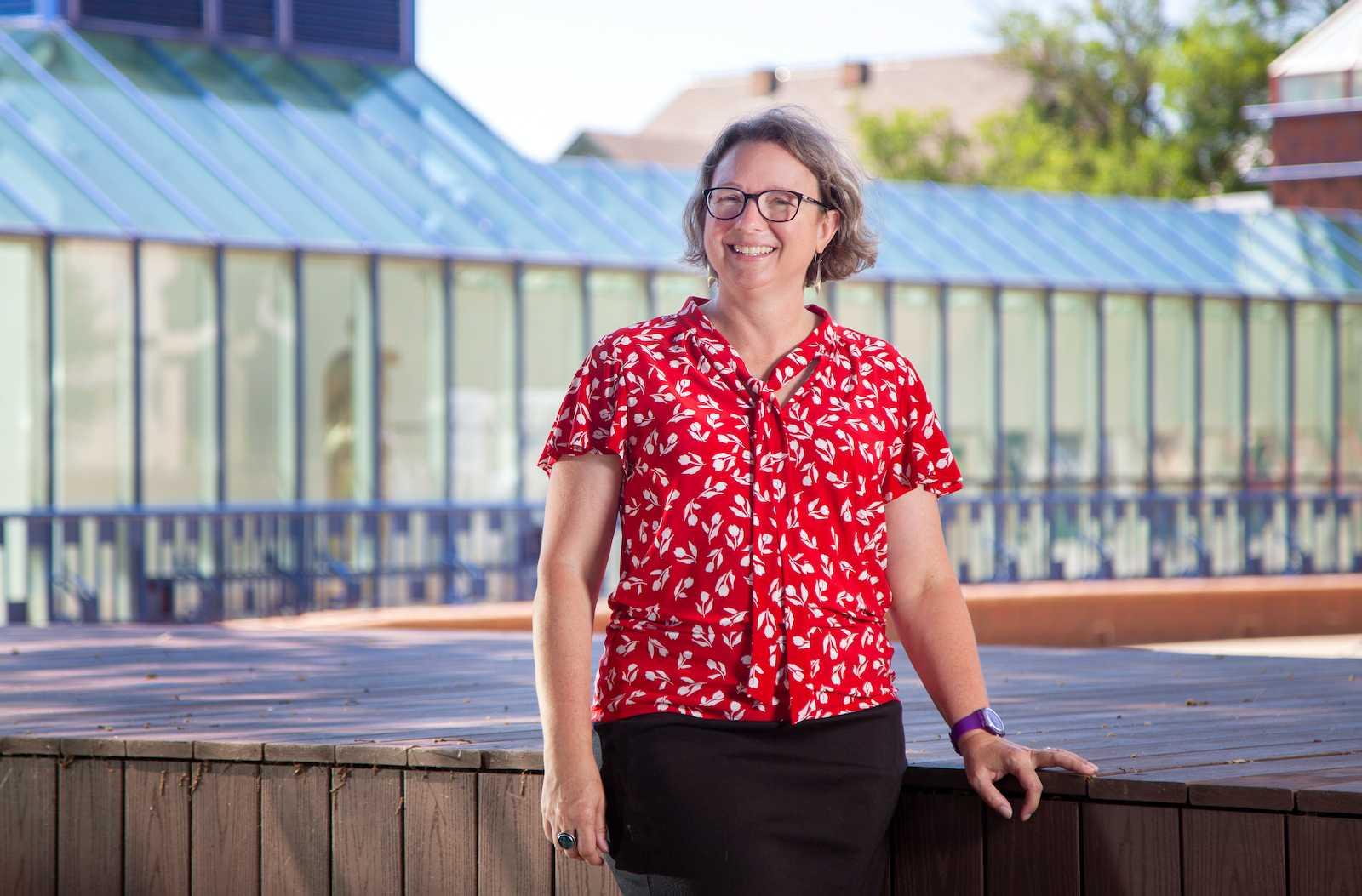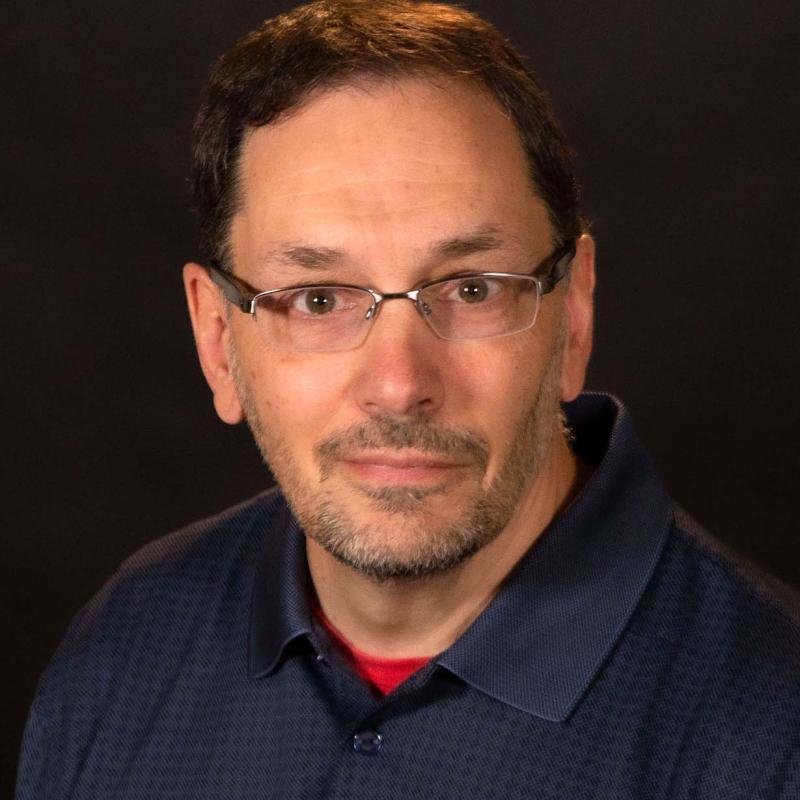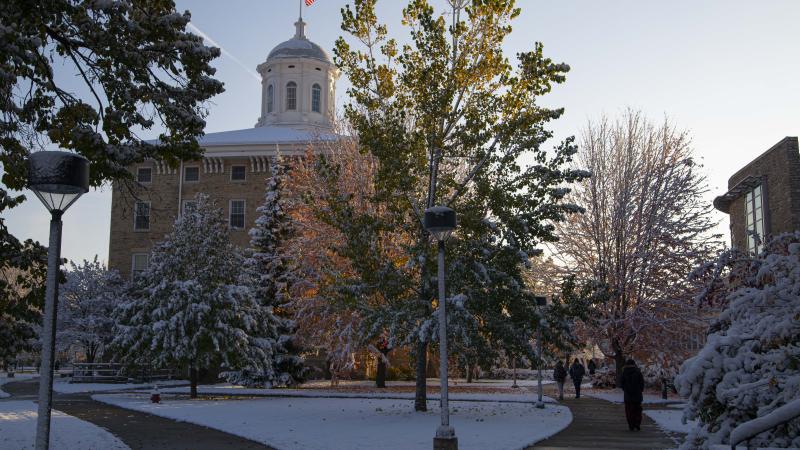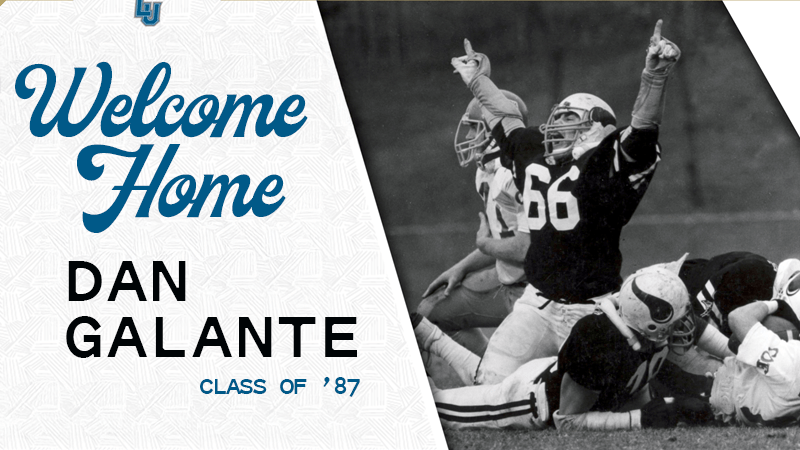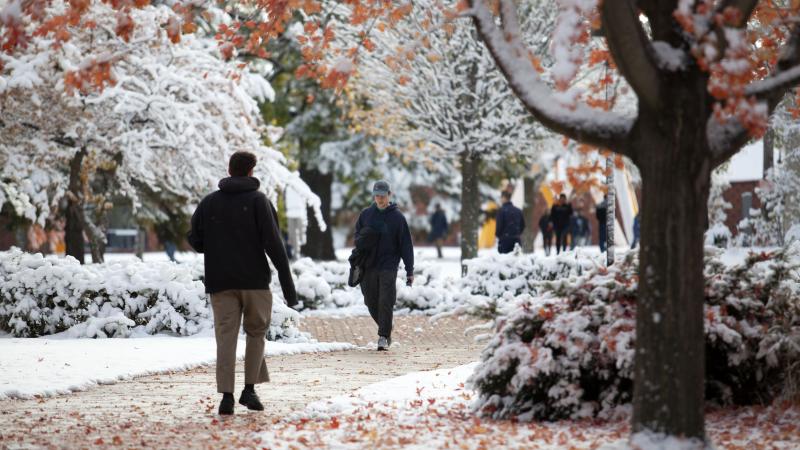Interdisciplinary teaching is a mantra for Danielle Joyner. As a scholar of medieval studies, it sort of comes with the territory.
For those who share Joyner’s scholarly interests, there’s no better place to be in mid-summer than the University of Leeds in Leeds, England, where the International Medieval Congress annually gathers to explore, dissect, and debate topics ranging from art to literature to architecture to philosophy, all through the lens of the Middle Ages.
The associate professor of art history at Lawrence University was in Leeds for the festivities in early July, presenting a paper, The Migration of Birds Across Late Antique and Early Medieval Arts, and partaking in a panel discussion, The Mediterranean and Southern France, II: Beyond Braudel—The State of Medieval Environmental History, moderated by Harvard University’s Daniel Smail.
“There were more than 2,000 medievalists wandering around,” Joyner said. “It was wonderful.”
The congress drew scholars from 61 countries, with more than 600 sessions presented.
Whether working in class, studying abroad, or curating objects in Wriston Art Galleries, you’ll deepen critical, analytical thinking and refine writing skills.
It was Joyner’s first visit to the medieval congress held in England—a U.S. version, the International Congress on Medieval Studies, happens each year in Kalamazoo, Michigan. She’s been to that one multiple times, and it’s always robust and interesting, but there was something special about experiencing it in England, where you are immersed in the history, she said.
“Europeans do medieval studies differently than Americans do medieval studies because they live in the ongoing presence of monuments and traditions,” Joyner said. “They are surrounded by all this material culture, architectural remains; their libraries are right there at hand. And because it’s so at hand and so familiar, they tend to ask different types of questions.”
Joyner, who holds a Ph.D. in history of art and architecture from Harvard, and master’s degrees in medieval studies from the Centre for Medieval Studies at the University of Toronto and art and art history at the University of Utah, returned from Leeds ready to share with students her insights and reflections—get your hands on primary sources, if not by traveling then via museums and libraries; history can not only teach us, it can inspire us; and international travel can be transformative.
Not lost in all of that is the interdisciplinary approach that Joyner has been such an advocate for since arriving on the Lawrence faculty in 2018.
“To get at any aspect of an object made 1,200 years ago, you have to do history, you have to do literature,” she said. “If it’s a church object, which many of them are, you need to understand the liturgy. I think all of art history is very interdisciplinary, but medievalism especially opens itself up to those different approaches.
“Most people don’t go around thinking about the Middle Ages or medieval art or art history. And, so, the interdisciplinary approach I feel gives students ways of finding connections between the long ago and the now, connections that they maybe never would have thought about.”
Joyner saw her students’ eyes open wide last academic year when she joined with colleagues Sara Ceballos, an associate professor of music, and Madera Allan, an associate professor of Spanish, to team-teach Cantigas de Santa Maria, a course focused on a 13th century songbook from Spain that blended art, music, and history. The collaboration between musicology in the Conservatory and Spanish and art history in the College of Arts and Sciences was exhilarating, she said.
“The class was so much fun,” Joyner said. “The students liked it, we liked it. We got to the end and thought, we have to do this again.”
They’re planning a follow-up class during December Term (known as D-Term), the two-week optional session between fall and winter terms. Joyner, Ceballos, and Allan will take 10 to 12 students to Spain for two weeks. A foundation is helping to organize experiences in Toledo, Cordoba, and Madrid, Spain, where the group will study the Cantigas songbook while analyzing depictions of relationships among Christians, Muslims, and Jews and visiting surviving medieval architecture.
Find details on D-Term courses, deadlines
Meanwhile, in the coming Fall Term, Joyner will join Martyn Smith, associate professor of religious studies, to co-teach a course examining the differences between the travels and lessons of two famous explorers—Marco Polo, a Venetian traveler of the 13th century, and Ibn Battuta, a Muslim traveler of the 14th century.
It's all part of the interdisciplinary approach that brings Joyner so much joy. It’s about lighting a spark, she said, whether it’s an art history major who wants to be a curator or a biology major who has never given the Middle Ages a second thought.
“My favorite thing is learning new stuff,” Joyner said. “And I love it when the window opens and a connection happens, or I can see something pop in other people. I love that. It is a vicarious thrill. So, whether they decide to do this forever, that’s exciting, or whether they never thought about it, but something made them go, ‘Whoa,’ that is equally as exciting. That’s the joy of teaching. It’s pretty thrilling.”
